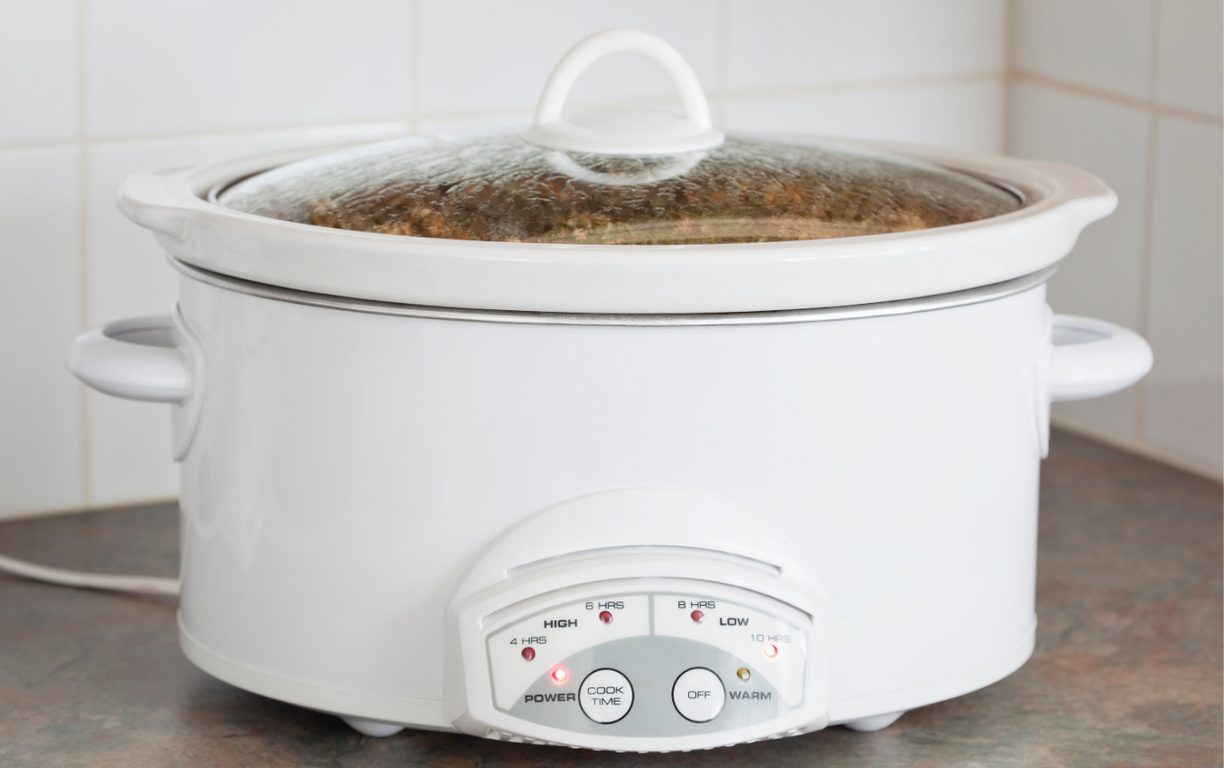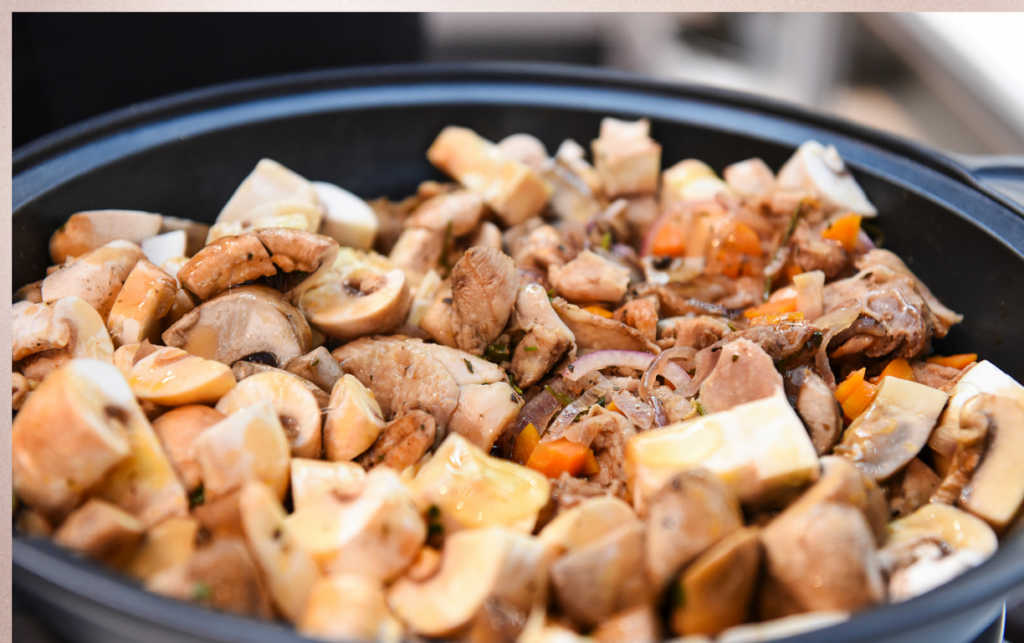Physical Address
304 North Cardinal St.
Dorchester Center, MA 02124
Physical Address
304 North Cardinal St.
Dorchester Center, MA 02124


Using a slow cooker can transform your meal prep, making it easy to enjoy delicious, home-cooked dishes with minimal effort. However, many people unknowingly make mistakes that can lead to disappointing results. Whether you’re a seasoned pro or a newbie, understanding these common pitfalls can elevate your slow cooking game.
From overloading the pot to neglecting the importance of layering ingredients, these missteps can affect cooking times and flavors. You might think you’re saving time, but the wrong approach can turn your culinary masterpiece into a soggy mess. Let’s dive into the most frequent slow cooker mistakes and how to avoid them, ensuring every meal is a success.
Overloading the slow cooker can lead to uneven cooking. Fill the pot only two-thirds to three-quarters full to ensure proper heat circulation.
Not Brownning Meat
Skipping the browning step for meat can result in a bland flavor. Browning meat before adding it to the slow cooker enhances taste and texture.
Using Dairy Too Early
Adding dairy products at the beginning of the cooking process can cause curdling. Incorporate milk, cream, or cheese during the last 30 minutes to maintain creaminess.
Ignoring Ingredient Order
Placing ingredients in the wrong order affects cooking efficiency. Position denser items like root vegetables at the bottom and more delicate ingredients on top for better results.
Removing the Lid Frequently
Lifting the lid frequently releases heat and extends cooking time. Keep the lid on, only checking when necessary, to maintain consistent temperatures.
Not Adjusting Cooking Times
Using the wrong cooking times can lead to undercooked or overcooked meals. Refer to specific recipes and adjust based on ingredient sizes and your slow cooker model.
Inadequate Liquid Use
Neglecting to add enough liquid can result in dry meals. Ensure there’s sufficient broth, water, or sauce to create the desired consistency and flavor.
Using Low-Quality Ingredients
Utilizing low-quality or outdated ingredients can negatively affect flavors. Always select fresh, high-quality ingredients for the best outcome.
Not Prepping Ingredients
Failing to prep ingredients properly can impact cooking times. Cut vegetables and meats into consistent sizes for even cooking.
Using the Wrong Slow Cooker Size
Choosing an incorrect size slow cooker affects cooking performance. Match the pot size to the recipe and portion requirements to optimize results.
Overloading a slow cooker impacts cooking efficiency and results. It leads to unevenly cooked meals, which can affect flavor and texture.
Understand the capacity limitations of your slow cooker. Each model has a specific volume limit, typically ranging from 3 to 8 quarts. A general guideline is to fill the pot no more than two-thirds full. This prevents overcrowding and allows ingredients to cook evenly. Avoid exceeding this limit, as too much food may not cook thoroughly, compromising safety and quality.
Overloading a slow cooker affects cooking time significantly. If the cooker is packed tightly, heat distribution becomes inefficient. Thus, the outer edges may cook faster than the center. This inconsistency can lead to partially cooked or raw portions, particularly in meats and root vegetables. Adjusting cooking time becomes essential when working with larger quantities to ensure thorough cooking. Remember to monitor food closely, as excessive loads can alter expected cooking durations and make timing unpredictable.
Prepping ingredients correctly is crucial for successful slow cooking. Poorly prepped ingredients can lead to uneven cooking and compromised flavors.
Uniform sizing of ingredients ensures even cooking. Cutting vegetables and proteins into similar sizes promotes consistent heat distribution. Smaller pieces cook faster, while larger pieces may require more time. Aim for bite-sized chunks that are similar in thickness, especially for dense vegetables like carrots or potatoes. This approach prevents overcooking some items while undercooking others.
Using frozen ingredients can affect cooking times and textures. When adding frozen meat or vegetables directly to the slow cooker, they may release excess moisture, diluting flavors and altering consistency. Thaw ingredients beforehand to maintain proper texture and cooking efficiency. If you opt for frozen items, lower the slow cooker setting to accommodate the additional cooking time needed for thawing.
Using the correct amount of liquid is crucial for successful slow cooking. Insufficient liquid can lead to dry meals and uneven cooking, while too much liquid can leave dishes soupy.
Many people believe that slow cookers require minimal liquid due to their sealed environment. This assumption often leads to disappointing results. Contrary to that belief, slow cookers need adequate moisture to create steam, which helps cook ingredients evenly. You should also avoid following traditional stovetop cooking liquid amounts; for slow cooking, use more liquid to enhance flavor and consistency.
Balancing liquid with other ingredients impacts dish flavor and texture. When adding vegetables, grains, and proteins, consider their moisture content. For example, tomatoes add liquid; they may require less additional liquid. Conversely, grains like rice absorb moisture, so adjust liquid amounts accordingly. Always aim for a balance that results in a flavorful, desirable consistency without overwhelming your dish.
Skipping seasoning leads to bland and unfulfilling meals. Properly seasoning your dish enhances flavors and elevates the overall eating experience.
Herbs and spices are essential for flavor development in slow cooking. Fresh herbs, like basil and parsley, provide vibrant flavors when added toward the end of cooking. Dried spices, such as cumin and paprika, benefit from longer cooking times, infusing dishes with rich complexity. Experimenting with combinations allows you to create signature dishes that stand out.
Add seasoning at different stages for optimal results. Season meats and vegetables before browning to enhance base flavors. For soups and stews, incorporate salt and spices halfway through the cooking process to avoid dilution. Taste your dish during the last hour of cooking, adjusting seasonings as needed to ensure balanced and flavorful outcomes.
Using the incorrect cooking setting can significantly affect how your dish turns out in a slow cooker. Understanding the different settings and knowing when to use them ensures optimal results.
Low and high settings on slow cookers cater to different cooking needs. Typically, the low setting maintains a temperature of 190°F to 200°F, while the high setting ranges from 300°F to 315°F. Cooking meals on the low setting enhances flavor by allowing ingredients to meld together over longer periods, ideal for tougher cuts of meat. In contrast, the high setting cooks ingredients faster, suitable for dishes needing shorter cooking times. Misusing these settings can lead to overcooked or undercooked meals. Always check your recipe for recommended settings based on the required cooking time.
Cooking times are crucial, affecting flavor and texture. Most recipes specify cooking durations for both low and high settings. As a general rule, food cooks in about half the time on high compared to low. However, this can vary depending on the type and quantity of ingredients. For example, soups and stews typically take 6-8 hours on low and 3-4 hours on high. Monitoring cooking times closely ensures that dishes reach the correct doneness. Be aware that opening the lid to check on food can increase cooking times, so limit those checks whenever possible.
Avoiding common slow cooker mistakes can transform your cooking experience. By paying attention to ingredient preparation and layering you’ll ensure even cooking and rich flavors. Remember to monitor liquid levels and adjust cooking times based on your recipe and ingredient sizes.
Using the right settings and not overloading your cooker will help you achieve delicious results every time. Don’t forget to season adequately and taste as you go for the best flavor. With these tips in mind you’ll enjoy the full benefits of your slow cooker and create mouthwatering meals with ease. Happy cooking!

Using a slow cooker makes meal prep easy and convenient. It allows you to prepare flavorful, home-cooked meals with minimal effort and time spent in the kitchen. Slow cooking enables ingredients to meld together, enhancing flavors and tenderness, while also freeing you up to focus on other tasks.
Common mistakes include overloading the cooker, skipping the browning step for meat, and adding dairy too early. Avoid frequently removing the lid, not using enough liquid, and not prepping ingredients properly. These issues can lead to uneven cooking and bland flavors.
For best results, place denser ingredients, like root vegetables, at the bottom of the slow cooker and layer more delicate items on top. This ensures even cooking and heat distribution, preventing issues like raw spots or extended cooking times.
Yes, but it’s best to thaw frozen ingredients before adding them to your slow cooker. Frozen foods release excess moisture, which can dilute flavors and affect cooking times. If you must use them frozen, adjust the cooking time accordingly.
Adding adequate liquid is essential for even cooking. Generally, you’ll need more liquid than traditional stovetop methods since slow cookers create steam. Aim for enough liquid to cover the ingredients, but avoid adding too much to prevent a soupy dish.
Seasoning is crucial for flavor development. Season meats and vegetables before browning, and add salt and spices about halfway through the cooking process. For soups and stews, taste during the last hour to adjust seasonings for the best flavor balance.
It’s important to use the correct setting. The low setting (190°F to 200°F) is ideal for enhancing flavors over longer cooking periods, while the high setting (300°F to 315°F) cooks food faster. Monitor cooking times closely and avoid frequent lid openings.
Avoid overloading your slow cooker; aim to fill it no more than two-thirds full. Overfilling can lead to uneven cooking and may result in undercooked food or longer cooking times, particularly for meats and larger cuts of vegetables.